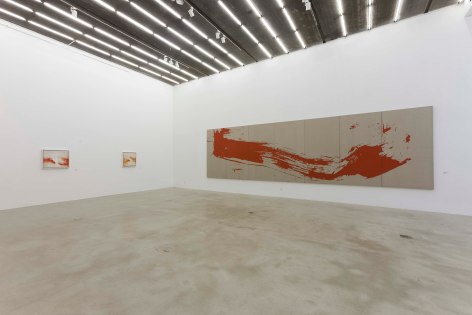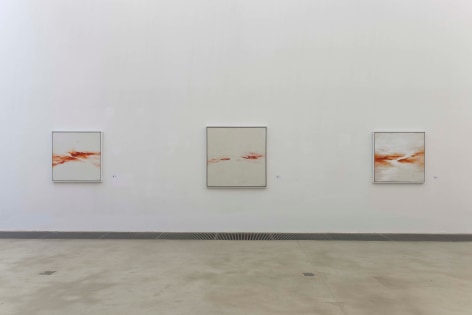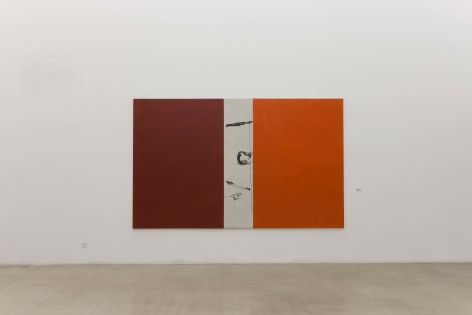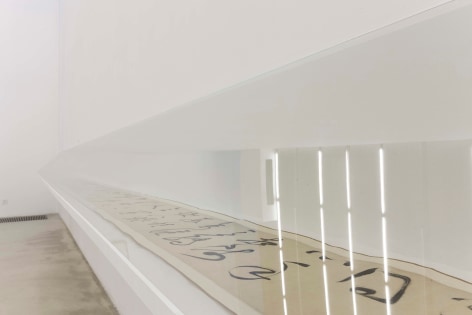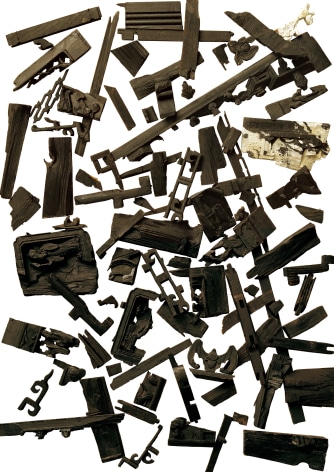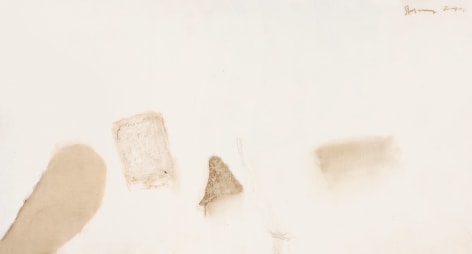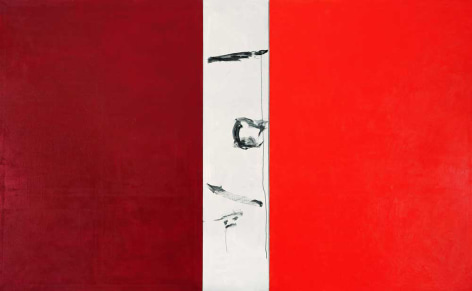Chambers Fine Art is pleased to announce the opening on November 7, 2015 of both LaoZhu’s own namesake exhibition, and the exhibition The Third Abstractio nfocusing on art by Shang Yang, Tan Ping, Wang Huaiqing and Yan Shanchun. In The Third Abstraction, LaoZhu will present a Ming Dynasty calligraphy by Dong Qichang (with Deng Tuo’s postscript) to compare with these four artists’ works. Dong is a very important figure in Chinese art history. His calligraphy and paintings were influential at the time as well as for the many generations after that. His theory of the Southern and Northern Schools of Painting established the core value of traditional Chinese art aesthetics. LaoZhu believes that these four contemporary artists have transformed the core value from in different ways and nearly achieved the same artistic level. At the same time, it is also fascinating that Deng Tuo infused his life experience into his writing. The appearance of Deng Tuo’s postscript may look like a coincidence at first glance, but it becomes evidence linking Dong Qichang with the four artists. In this way art dissolves the power structures in abstract calligraphy, the message that LaoZhu wants to express in The Third Abstraction.
As a scholar, LaoZhu has long been studying and investigating Shang Yang, Tan Ping, Wang Huaiqing and Yan Shanchun’s art, and is using this exhibition as an opportunity to showcase the relationship between these four artists and the traditional Chinese art core values represented by Dong Qichang. In LaoZhu’s opinion, the core values can be interpreted as Chinese traditional “spirit” or “brushwork”. But if we approach their art from the world perspective, we can also use the universal language of abstraction to reveal their unique values. By looking at the relationship between abstract art and modernity, we can divide abstract art into three different approaches - the First Abstraction, the Second Abstraction and the Third Abstraction. If the work of Kandinsky and Mondrian is representative of the First Abstraction, Picasso’s Cubism, Pollock’s Abstract Expressionism and later Minimalism can be considered as the Second Abstraction. The subjects of the First and the Second Abstractions are still shapes and colors—forms, compositions and textures are visible, which can either embody meanings or be meaningless, in order to establish a spiritual and human connection. The Third Abstraction, on the other hand, emphasizes the embodiment and expression of the integrity of human beings. It includes the accumulation of meanings behind “traces of actions”, instead of impulsive emotions and actions. This is the literati temperament that Dong Qichang advocated. The transformation of emotions embodies direct attention to the subject itself, observing and experiencing its original status with fresh eyes. It takes unpredictable forms. It does not emphasize the spiritual meanings behind forms as with the First Abstraction, nor does it concern actions, intensities or colors as with the Second Abstraction. The key is in finding a way to embody, even repeatedly, spiritual meanings in one stroke, leaving to the audience the freedom to experience and learn.
Shang Yang has created many series, including Shang Yang Yellow, Grand Landscape, Dong Qichang Project, Book from the Sky, Album and Passing By. Starting from the Dong Qichang Project series, he completely eliminated the use of symbols. Instead, he began a creative process in which creation and destruction were equally important. From his perspective, chance is a much more important factor in the art making process than purposeful action. Tan Ping has been persistently creating artworks based on his personal experience, which enables him to stay closely connected to his art on both physical and spiritual levels. Wang Huaiqing’s works often pick out Chinese characteristics from specific subjects, and use material as a pure language to convey a deep sense of history and culture. Yan Shanchun, on the other hand, uses smooth brushwork and refined technique to reproduce the landscapes imprinted deeply in his mind. He creates subtle and elegant images after applying multiple layers of pigment, and the faint touches of color are filled with emotional memories.
LaoZhu is an important figure in Chinese contemporary art and in the critical field, and plays multiple roles. Besides being a well-known scholar, he is also a prolific artist. He also inherited the ancient Chinese traditional beliefs that everyone should live rationally, responsibly and with sensibility. However, he refuses to label himself, and states that “no one is an artist, but anyone can be an artist”. His works include the 1988 performance Red Vase Green Vine, a series of art projects related to Paint the Mountain, Heidelberg Tree Planting Plan, and this series of abstract paintings.
The current LaoZhu exhibition presents his medium and small sized works, as well as one large scale work Magnified Calligraphy, in which the artist presents one brushstroke from a calligraphic work magnified by 100 times. The seemingly abstract work is actually an investigation of Chinese traditional calligraphic techniques. LaoZhu regards Shang Yang, Wang Huaiqing, Tan Ping and Yan Shanchun as his mentors and has built a deep friendship with them. In this exhibition, his regards his own works as examples of the Third Abstraction that he has been experimenting with and exploring for thirty years. They surpass reality, transcend life, and are difficult to interpret.
The Third Abstraction is a summary and preface of the entire history of abstract art, and is also an investigation of the experimental direction of abstract art in China. With its continuous development, the achievement and value of abstract art will become more significant in China, and will emphasize the unique qualities of Chinese art.

